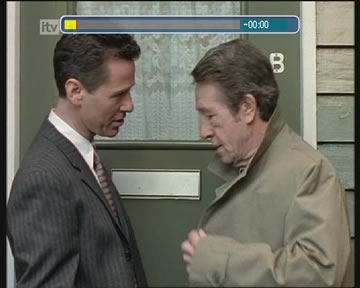Info, tips and guides
Bugs
Documents
FAQs
Links
Where to buy
Downloads
TAPs
Linux tools
Mac tools
Windows tools
Toppy firmwares
Search
Forum FAQs
Forum index
Forum search page
Tools
Toppy.org.uk
TF5800 manual: time shift television
Time Shift television
Because it has a hard disk inside, your PVR is able to constantly save the TV programme that you’re watching. That means that it can make TV more convenient than ever – you don’t need to miss something crucial when the phone rings, or wonder what a character in a drama just mumbled, thanks to time shifting.
Time shifting just means that the most recent hour of the television channel you’re watching is saved on the PVR’s disk; each time you change to a new channel, it starts to save the programme you’re watching, so if you’ve been watching for 20 minutes, all those twenty minutes will be on the disk. If you’ve been watching for 85 minutes, then the most recent hour will be on the disk, and the first twenty five minutes won’t be there any more.
What does all this mean to you?
Rewinding TV
Simple. When you’re watching live TV, and you want to
see something again, just press the Rewind button![]() on
the remote control, and the programme will start to play in reverse. To go
faster, press Rewind again.
on
the remote control, and the programme will start to play in reverse. To go
faster, press Rewind again.
When you reach the point where you want to start watching,
perhaps to see a goal again, or to try and catch some important dialogue,
just press the Play button ![]() .
.
You’ll see a display at the top right hand corner of
the screen, telling you how far behind live TV you are and, if you like,
you can use the Fast forward key![]() to move forwards again, until you catch
up with the live broadcast.
to move forwards again, until you catch
up with the live broadcast.
When you do that, you’ll see a message with the word ‘Live’ at the top right corner of the screen.
If you change channel, the PVR will discard the information on its disk, and start recording the new channel, so if you swap channels during the ads, you won’t be able to rewind when go back to the previous channel.
While the Rewind function is useful, the fastest speed is only three times normal. If you want to go back a long way, it’s quicker to use the Progress bar instead.
Press the Play button![]() and you’ll see something like this
on the screen.
and you’ll see something like this
on the screen.

The Progress bar is the bar in the box at the top of the screen, and the yellow area represents the information that’s saved on the hard disk.
You use the Rewind and Fast Forward keys to move along the progress bar quickly, so you could go right back to the beginning, for example, if someone else has come into the room and wants to view the programme you’re watching, or use Fast Forward until you catch up with live TV.
Press Play again to hide the progress bar. You can also access the Progress bar directly by holding down the Rewind or Fast Forward keys.
At any time, if you decide you want to jump straight to live
TV, just press the Stop button ![]() . You’ll see the Live message appear, and
you’ll now be watching at the same time as everyone else.
. You’ll see the Live message appear, and
you’ll now be watching at the same time as everyone else.
Pausing TV
Rewinding is useful to see something again, but if you don’t
want to miss something, press the Pause button![]() instead. You’ll see a
pause symbol appear at the top right of the display, and a counter showing
you how far behind live TV you are.
instead. You’ll see a
pause symbol appear at the top right of the display, and a counter showing
you how far behind live TV you are.
When you want to carry on watching, just press Pause again, or press Play, and you can carry on from where you left.
You’re now watching time-shifted TV, and you can use the fast forward and rewind buttons, just as we described above. Press the Stop button at any time, or use Fast Forward, to return to live TV.
Why not press Pause when your favourite programme starts, then go and put the kettle on? When you’ve made your drink, press Play to start watching, and then Fast Forward through the ad breaks, until you’ve caught up with live TV again.
Note that time shifting is not possible if your box is watching a third channel while recording two others at the same time, since that would require a third recording to be made.
Now that you know how to watch TV, and use the PVR to time shift live TV, turn to the next chapter, where we’ll explain how you can schedule and play back recordings of programmes.